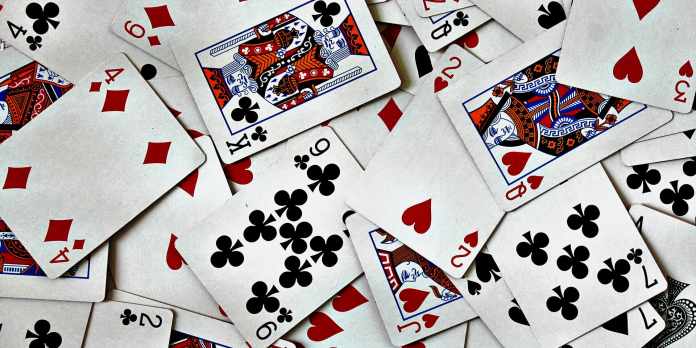Playing card games is probably one of the oldest gaming habits of mankind. Some evidence exists that card games were already played in 12th-century China. Slowly but steady, card games moved across the world and took new shapes. During the 14th century, card games travelled to Europe from the Middle East, where decorative decks and traditional games were welcomed by all layers of society.
While you may view card games as just what they are, games, they actually portray several roles in human history. Let’s dive in and see what developmental changes are reflected in card games, decks and rules alike.
54 cards, 4 suits
By the time playing cards were introduced in Europe, most decks already existed of 54 cards, divided into 4 suits. The card decks from the Middle East, however, differed greatly from what we are used to today. The Middle Eastern cards were decorated with calligraphy and flamboyant designs, but no people were pictured – probably due to religious beliefs. The European card players, however, decided to add images of people to their cards. And so the recognizable court cards depicting royalty (King, Queen, Jack) were introduced.
Missing queens and real kings
Even though card decks today nearly all include four queens, early decks didn’t. During the 14th and 15th century, decks knew two officers of different ranks and a king. The French, however, decided to add queens – introducing the deck we now accept as the standard deck for universal card games.
Since the very beginning of European card decks, the king has taken the position as the highest ranking card. In French decks, the fours kings represented true historical figures like Alexander the Great, Charlemagne and even Julius Caesar. Today, the cards have been more standardized and generally known as King of Hearts, King of Spades and so on.
The revolution of ace
In traditional European card decks, the ace (A) was the lowest ranking card. Oftentimes it would therefore just be replaced by a 1. However, as the French Revolution took shape, the position of the ace started to shift from bottom to top. Why? Revolutionaries didn’t like royalty very much and preferred something other than the king to be of the highest rank – hence the promotion of ace.
The ace once again fulfilled a special position within the deck as the British government during the 18th century required card decks to include a stamp on the ace of spades to show a special tax had been paid. This explains why many of the older card decks still include an ace of spades card that is significantly different from other cards in the deck.
The American joker
European card decks didn’t include any joker trump cards until the American decided to add them for the trick-taking card game of Euchre during the American civil war. Modern card decks include jokers representing wild cards; they can be played to replace any card at wish. However, the actual use of jokers often varies per card game, probably making them the most intriguing cards of the deck.
Design is not a coincidence
The margins at the sides of modern playing cards haven’t been there all that long. It was only during the 18th century that the French decided to create reverse court cards, leaving full-length drawings of their kings and queens out and replacing them with reversible busts so you didn’t have to flip your cards right way up.
Moreover, it was only during the 20th century that the white margins appeared in card decks. The ‘K’, ‘Q’, ‘J’, etc. would be printed on either side within the margins to allow players to hold their cards like a fan in one hand. The design changes in card decks therefore are never coincidental. There’s a long history of minor changes, new cards, different rules and more that now allow us to play thousands of card games – of which poker, blackjack and patience are mere examples of the numerous varieties.



















